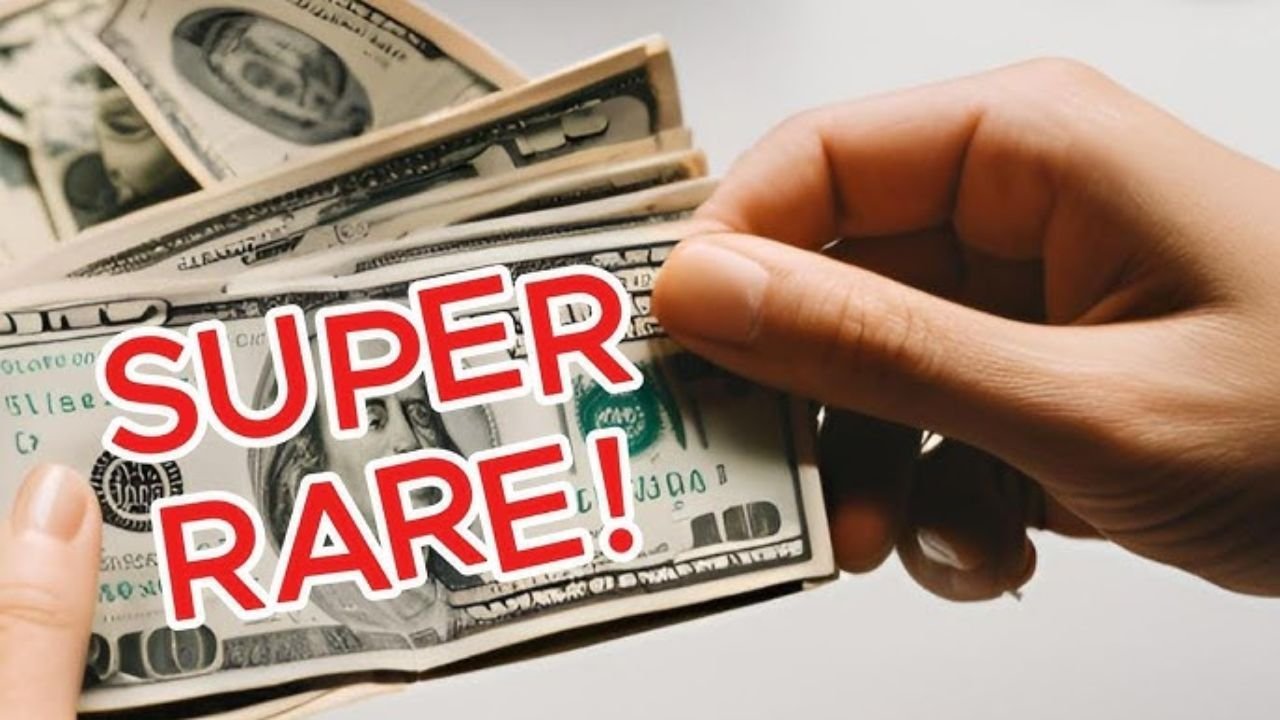$1 Star Note: In the quiet rhythm of a closing shift, a simple task—counting cash from a register drawer—became a moment of discovery. A cashier, sifting through well-worn bills, paused at a one-dollar note that looked just a little different. There, nestled in the serial number, was a small, distinctive star. This tiny symbol, often overlooked, transformed an ordinary piece of currency into a treasure, sparking a wave of excitement that reminds us all of the hidden stories in our everyday lives.
More Than a Replacement: The Tale of the Star Note
To understand the excitement, one must understand the star note’s origin. It isn’t a special edition created for collectors; it’s a practical solution with a built-in story. When a regular U.S. bill is misprinted or damaged during the printing process, it must be replaced to maintain an accurate count. Rather than disrupt the entire sequence, the Bureau of Engraving and Printing creates a “replacement note,” marking it with a star beside the serial number. This process makes each star note a unique fix, a correction that slipped into the world’s largest cash system. Their print runs are inherently smaller, and their journey into circulation is a matter of chance. Finding one is like finding a needle in a haystack—a small, serendipitous event that connects you directly to the intricate mechanics of currency production.
The Ripple Effect of a Single Discovery
News of a star note discovery, especially one pulled from active circulation, travels fast. It ignites online forums and social media groups dedicated to currency collecting. But more importantly, it captures the public imagination. Suddenly, people are looking at their money with fresh eyes, not just as a tool for transaction, but as a potential artifact. A cashier’s find inspires a shopper to check their wallet; a parent might show their child the star, turning a car ride into a lesson on history and value. This collective curiosity is a powerful force, proving that the most compelling treasures are those found in the context of our daily routines.
Decoding the Value: What Makes One Star Note Shine Brighter Than Another?
While every star note carries a certain charm, its monetary value is determined by a blend of factors that collectors meticulously study. The most significant is its condition. A crisp, uncirculated bill that is sharp and flat is far more desirable than one that is soft, folded, or worn from countless handlings. Next, experts look at the series year and the specific “run” it was part of. Some series had dramatically fewer star notes printed than others, making survivors from those batches exceptionally rare. Finally, the serial number itself can add a layer of value. Numbers that are very low, form a repeating pattern (like 12345678), or are a “ladder” (12345678) are considered highly collectible and can elevate a simple one-dollar bill into a prize worth hundreds.
The Democratization of Treasure Hunting
This growing interest in star notes represents a beautiful shift in collecting. It’s a hobby that requires no large initial investment—it simply asks for mindfulness. The barrier to entry is as low as the change in your pocket. This accessibility is creating a new generation of collectors: students, baristas, office workers, and retirees who share the common thrill of the hunt. The value isn’t solely in a future sale; it’s in the present-moment joy of discovery and the connection to a hidden, parallel world of rarity that exists within our everyday currency.
A Lasting Impression in a Digital World
In an increasingly cashless society, the story of the star note resonates on a deeper level. It celebrates the tangible, the physical object that carries the smudges of history and the potential for surprise. Each star note is a quiet testament to human error, correction, and the systems that underpin our economy. It’s a reminder that wonder doesn’t have to be grand; it can be found in the simple act of looking a little closer at the world right in your hands.
Frequently Asked Questions
Q1: If I find a star note, should I spend it?
While it is perfectly legal to spend, most enthusiasts choose to preserve it. Even if its market value is only slightly above face value, its value as a unique find is often worth more than the dollar it represents.
Q2: Where is the best place to look for star notes?
Your everyday cash flow is the best place to start. Ask for cash back at grocery stores, check the change from coffee shops, or simply be mindful when you break a larger bill. The more cash you handle mindfully, the better your chances.
Q3: I found a star note. What’s my first step?
Carefully place it in a protective sleeve or a clean, flat book to preserve its condition. Then, you can research its series and serial number online on collector websites or forums to get an idea of its potential rarity.
Q4: Do star notes exist for all denominations?
Yes, the Bureau of Engraving and Printing uses the star system for all denominations, from $1 to $100. However, finding a star note in a higher denomination is often even rarer, as they are printed in smaller overall quantities.
Q5: Is the value of star notes expected to go up?
As physical cash becomes less common, the pool of collectible, high-quality star notes in circulation is likely to shrink. This increasing scarcity, driven by the decline of cash use, could potentially make well-preserved examples more sought-after in the future.
